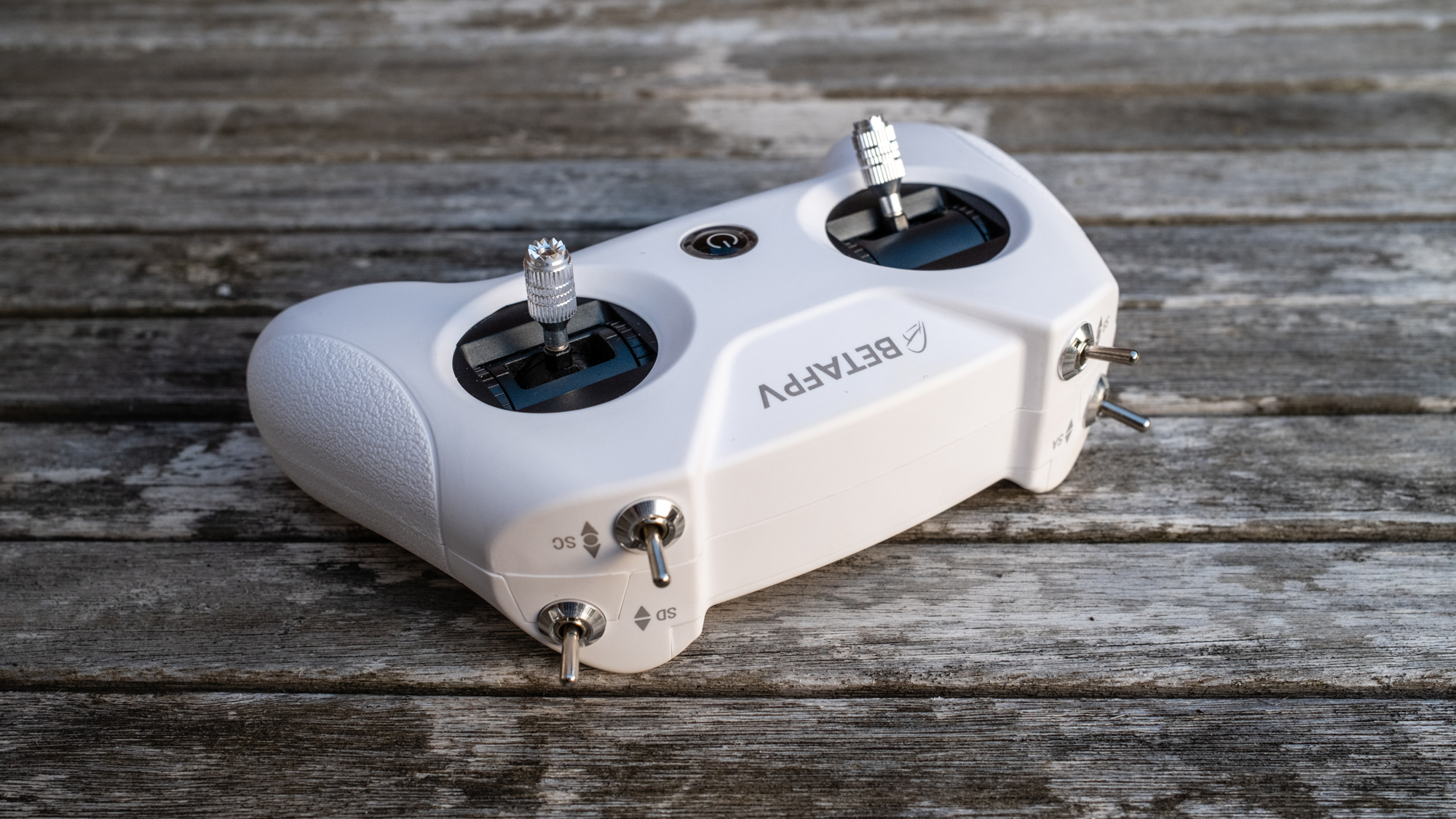Two-minute review
The buzz around FPV drones has once again been ignited thanks to the release of the DJI Avata; an FPV drone that can be flown by beginners using the intuitive DJI Motion Controller, or flown in Manual/Acro mode by experienced FPV pilots using the DJI FPV Remote Controller 2. True FPV flight, the kind that you’ll have no doubt seen in videos, where the drone dives, rolls, flips and flies through the smallest gaps imaginable is all achieved by flying in Acro mode.
Acro mode is incredibly difficult to learn with experts suggesting beginners need over 50 hours of practice between FPV simulators and beginner FPV drones just to learn the controls. In the early days, you will crash, often, so you need an FPV drone that’s not only suitable for beginners but also comes in a kit to make getting started as simple as possible. And this is exactly what the BetaFPV Cetus Pro Kit offers, making it worthy of a spot in our guide to the best beginner drones.

The BetaFPV Cetus Pro Kit comes with the Cetus Pro Brushless Quadcopter, a LiteRadio 2SE Transmitter, VR02 FPV Goggles, two 1S LiPo batteries, a USB battery charger and cable, four spare propellers, a propeller removal tool, a USB-C adaptor for firmware updates and a carry case for just $230 / £200 / €232 / AU$342. A small price to pay for a complete FPV kit with a robust drone that’s designed to withstand crashes.
Of course, nothing is indestructible, so spare parts are available if you do happen to damage the Cetus Pro. And since the batteries only provide 4-5 minutes of flight, it’s worth buying a four-pack of additional batteries for increased flight times. This costs $26 / £23 / AU$39, while a six-port USB battery charger costs $20 / £17 / AU$30.
The Cetus Pro Brushless Quadcopter is palm-sized at just 117×117×35mm and weighs 45.8g with a 1S LiPo battery. The small whoop drone airframe is made of PA12 plastic with built-in propeller guards around and below the propellers to make the drone safer around people and when flown indoors. This crash resistance is essential because you will crash frequently while learning. There is a camera on the Cetus Pro, but this is purely for the FPV feed with no capability to capture video, which is a shame.
The kit also includes the LiteRadio 2SE Transmitter, which is a basic FPV controller that’s perfect for the Cetus. FPV controllers are slightly different to camera drone controllers, but the included instructions make everything clear. The VR02 FPV Goggles are budget analogue box goggles that provide the FPV feed from the Cetus’ camera. These take some getting used to because they’re low resolution and interference in the feed is common when the drone is flown around obstacles. The main downsides are that there’s no DVR built-in for recording the FPV feed, and glasses can’t be worn when using them.
The beauty of the Cetus Pro is that it provides three speed modes – Slow, Mid and Fast – and three flight modes so you can use more advanced modes as your flying skills improve. Normal Mode is the easiest to fly with and uses optical flow sensors to help the drone to hover and hold position when the control sticks are centred. Another safety feature, which is available in all flight modes, is auto landing where the drone will land when the battery reaches the minimum level rather than crashing.
Sport Mode is like Angle Mode on more advanced FPV drones, where the angle of the drone’s roll and pitch are fixed at an angle, and when the direction (right) stick is released the drone will level itself automatically. With this mode, you still have to regulate the throttle like the accelerator in a car, which takes practice in itself.
Manual/Acro Mode is the final and most difficult mode to fly because you have to regulate the throttle alongside the direction stick; once the drone has been rolled left or right, and/or pitched forwards or backwards, it will remain at that angle until it’s manually levelled again. Plus, the drone can be rolled and flipped 360° or more, so it’s incredibly easy to crash in this mode and takes a lot of getting used to.
When you do crash in any of the flight modes, Turtle Mode allows you to flip the drone remotely if it lands upside down. It’s a handy feature that means you don’t have to always remove your goggles and walk over to the drone to retrieve the drone. Unfortunately, there’s no beep or buzzer built into the Cetus Pro, so when you do crash, if Turtle Mode doesn’t flip the drone, you’ll have to find the drone by sight alone which can be tricky depending on where you crashed.
Should I buy the BetaFPV Cetus Pro Kit?






